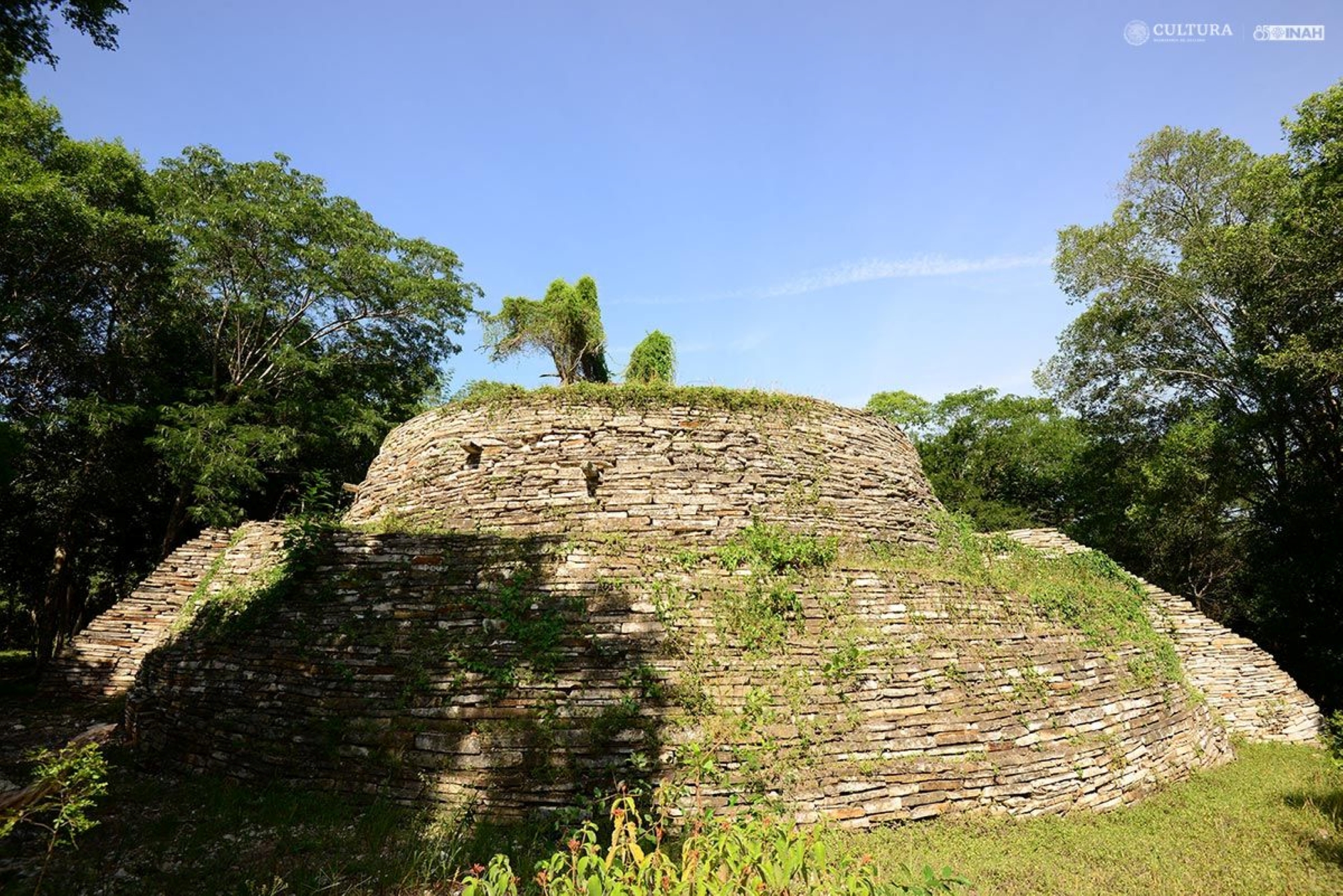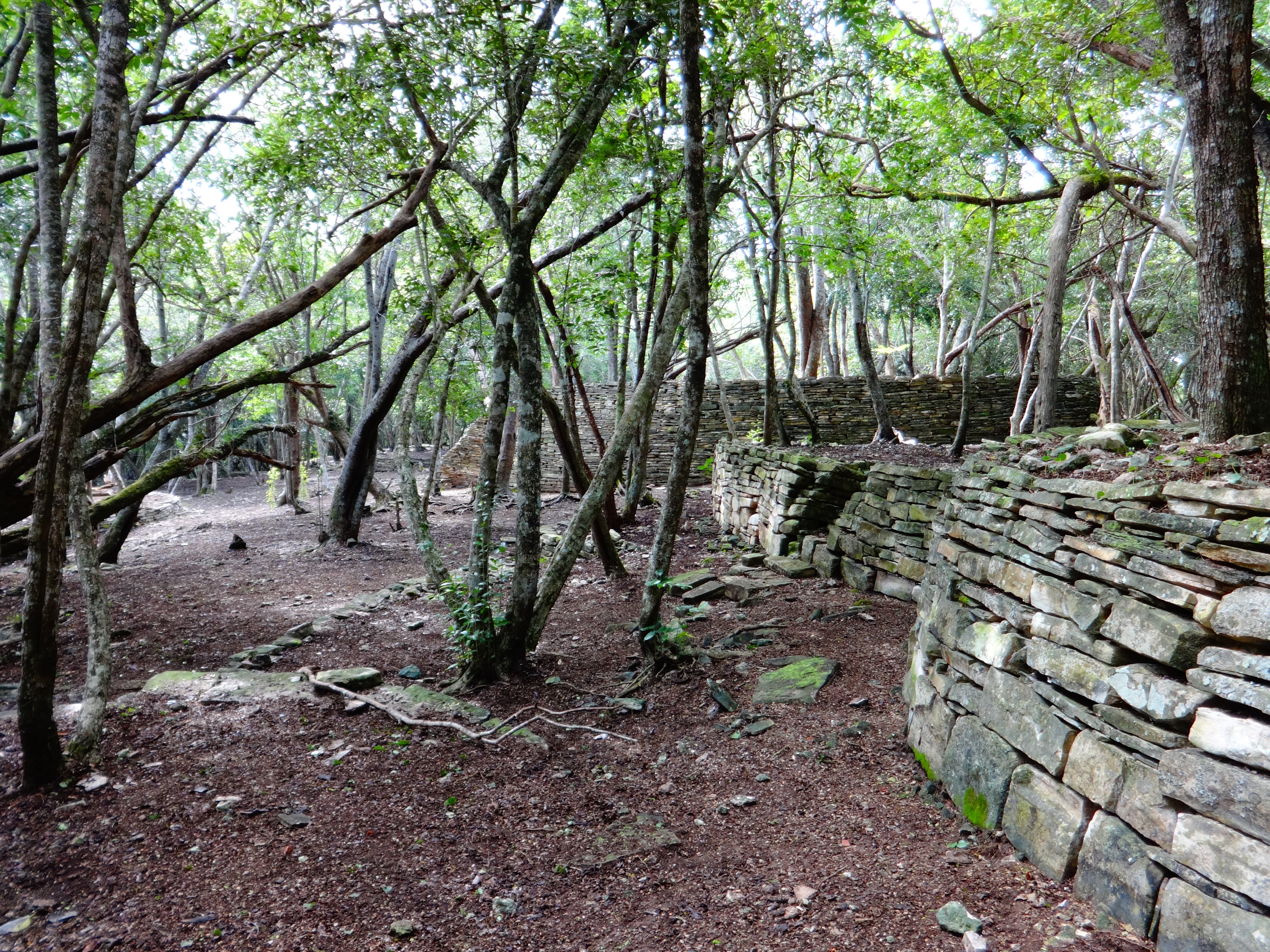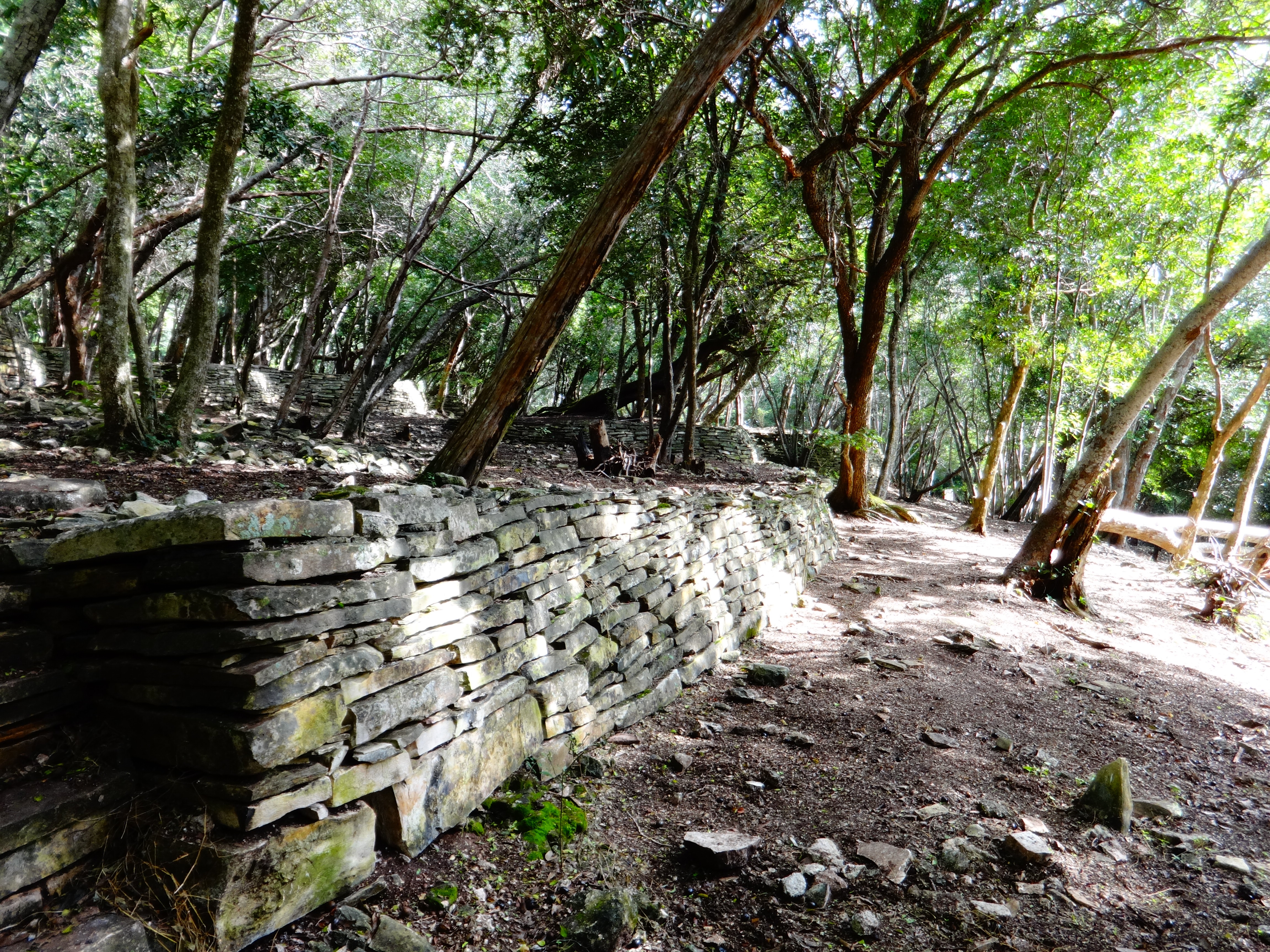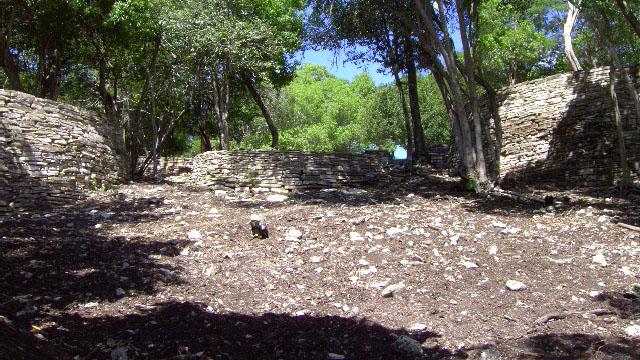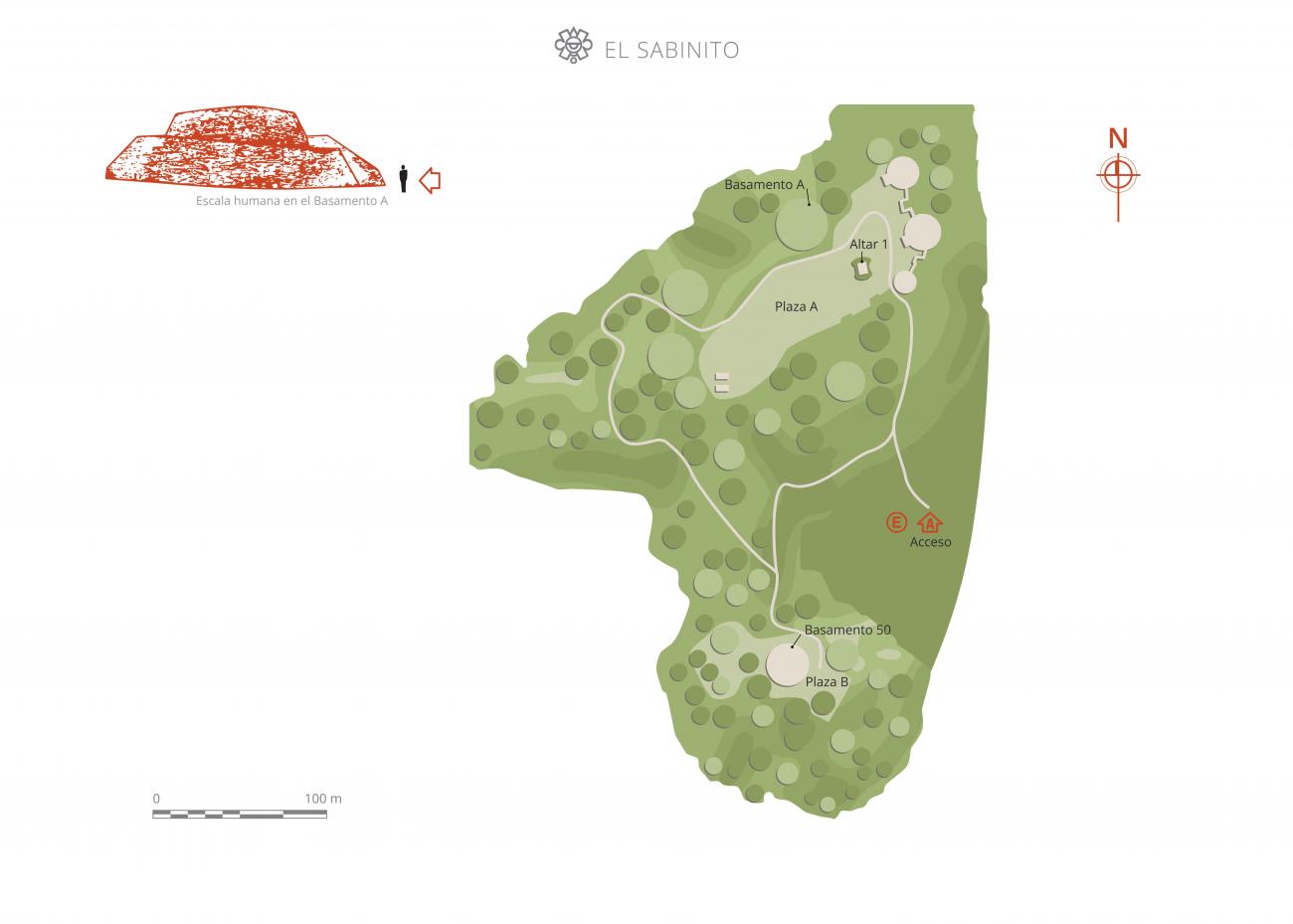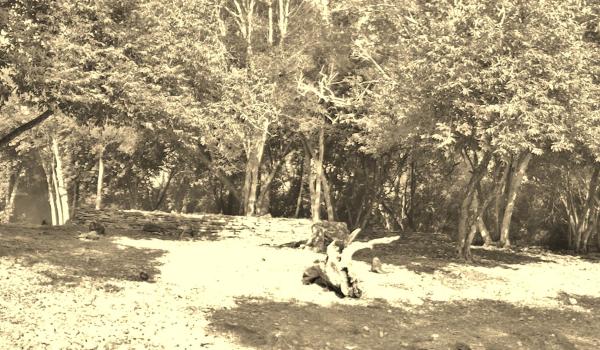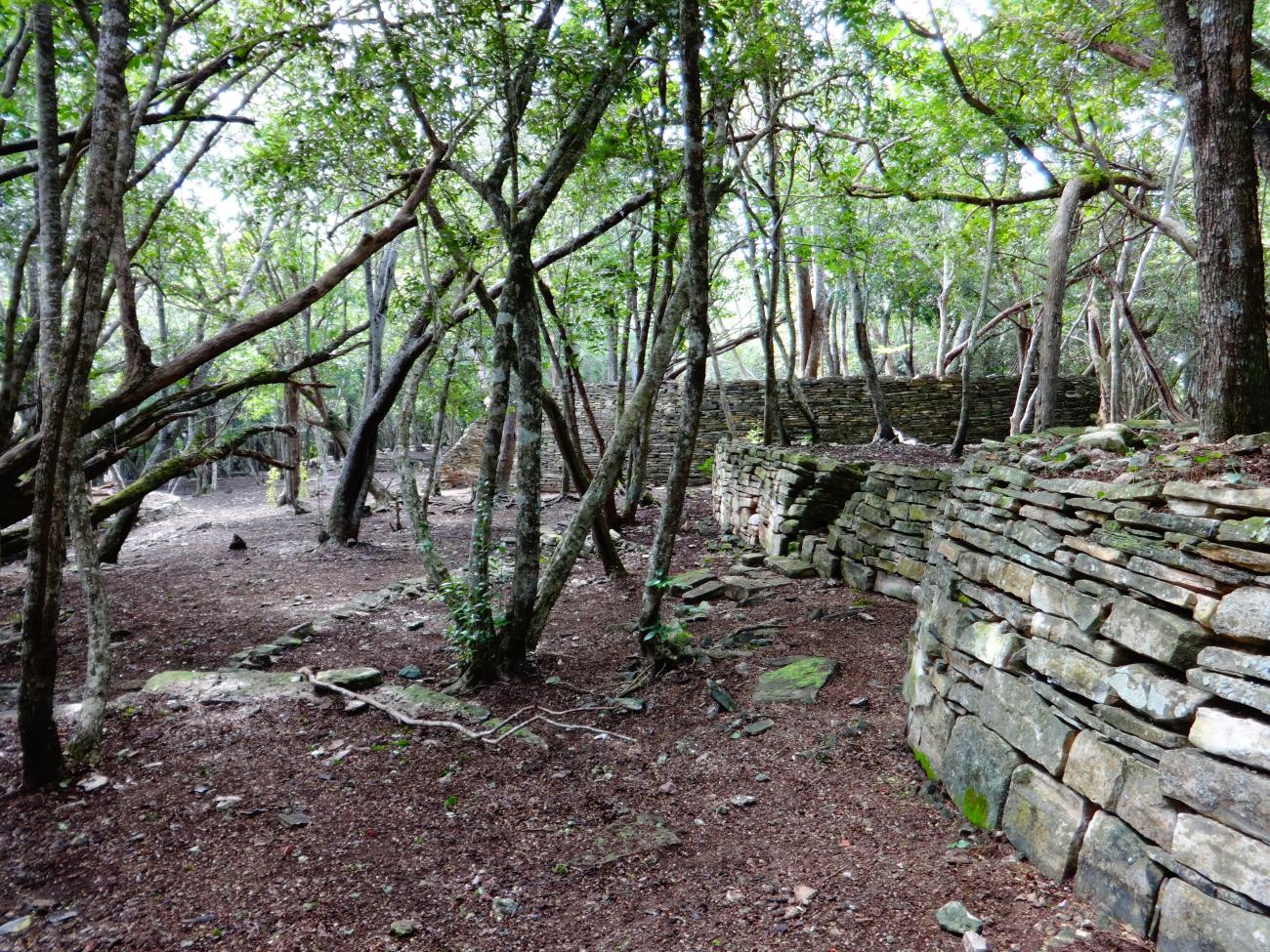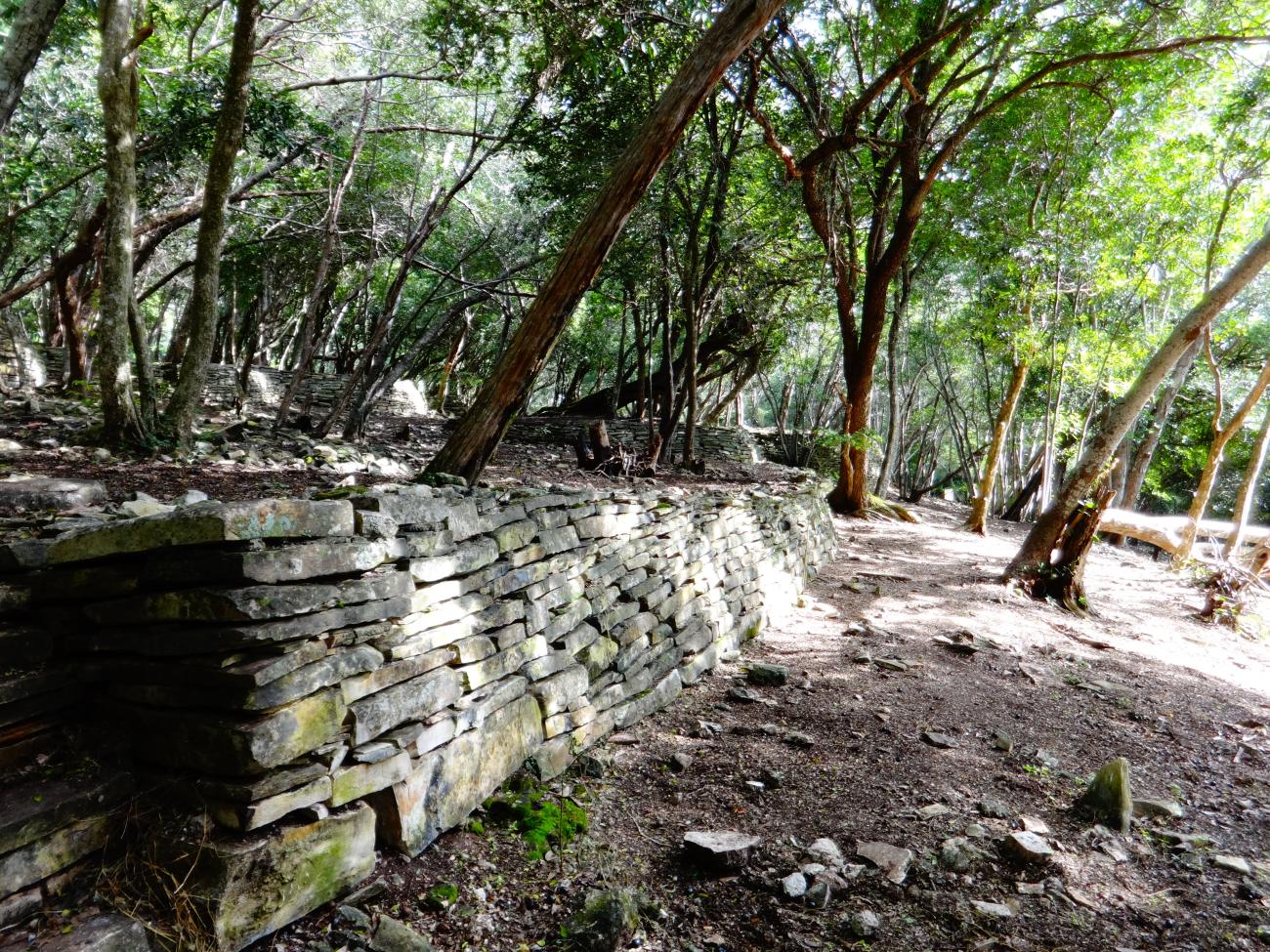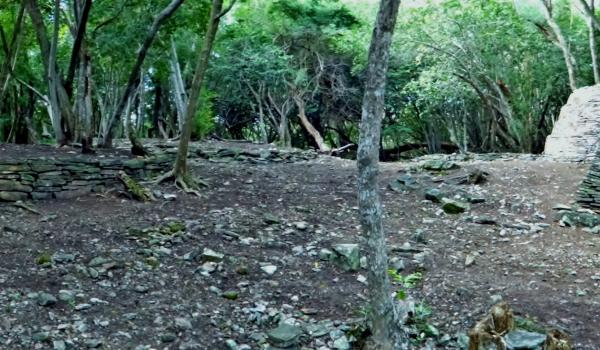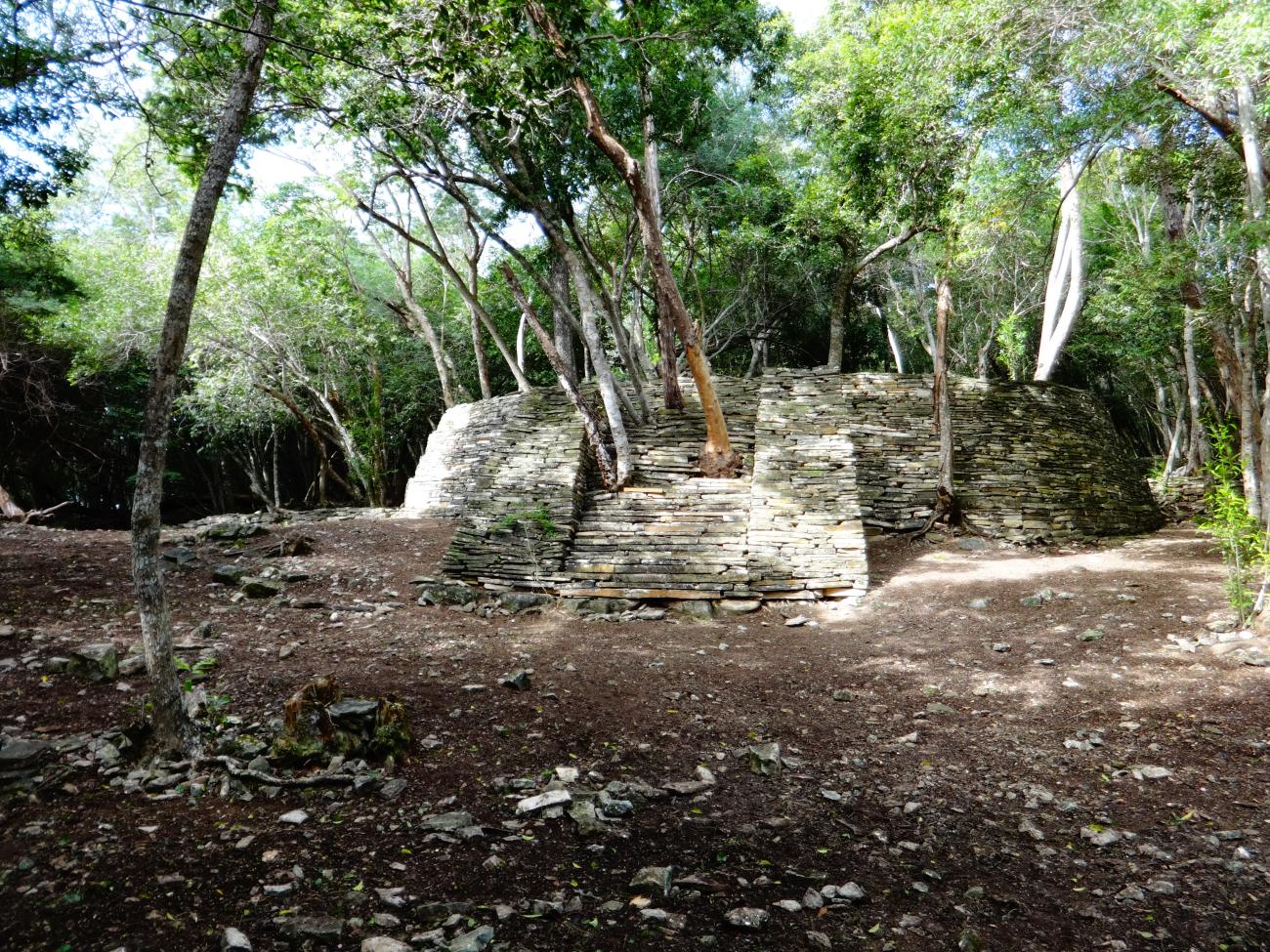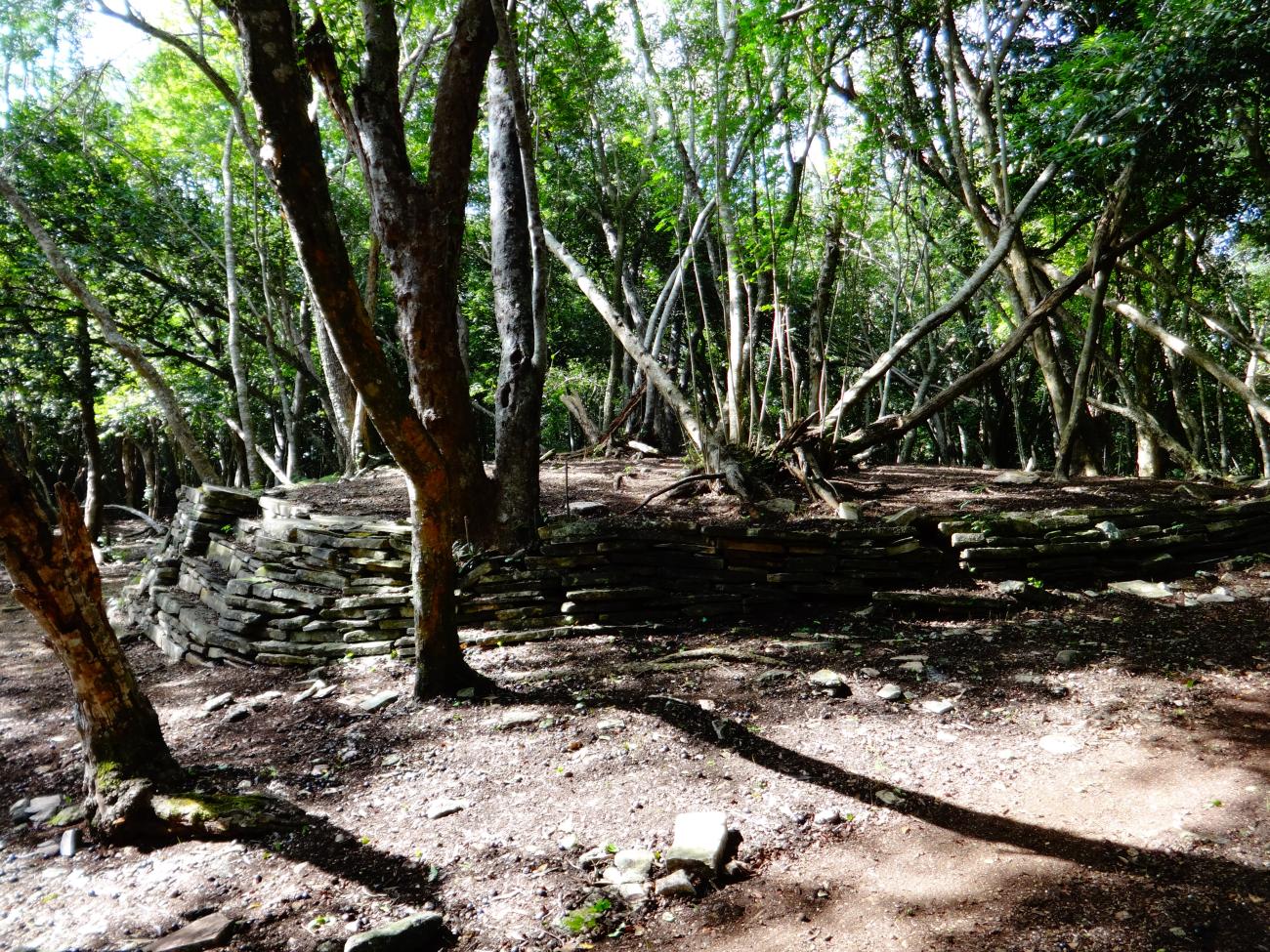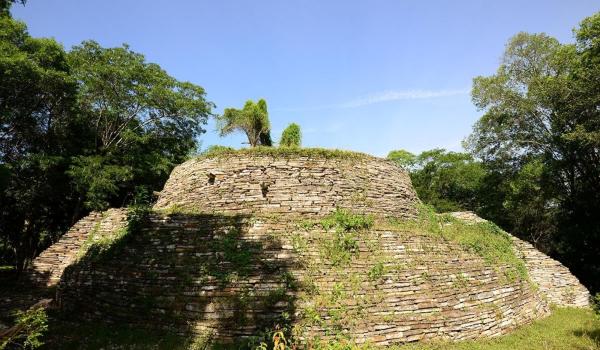El Sabinito is one of the settlements with the longest records of occupation in the Sierra de Tamaulipas, beginning more than 12,000 years ago when the first nomadic groups of hunter-gatherers passed through. On the other hand, the founders of El Sabinito, who inhabited the site between 200 and 1300, were sedentary farmers, belonging to the “Pueblito Complex” of the Sierra Cultural Tradition.
The site is in a hilly region, 1,200 feet above sea level, and it has circular plinths constructed from an earth and stone core carefully clad with slabs. The construction method employed at El Sabinito is adapted to the terrain. Plinths of various diameters and heights were built with connecting terraces and avenues also made from slabs, and at the same time creating a harmonious effect through their constant use. The way they fit into the environment is reminiscent of the walls of the canyons and ravines of the Sierra de Tamaulipas.
The archeological material retrieved in the process of investigation and major maintenance work is of a varied nature: pots, axes, stone and shell beads, projectile tips, figurines, grinding stones (metates) and stone pestles (tejolotes). The archeological material and architecture indicate that in addition to hunting and gathering, the people of El Sabinito often relied on farming activity, and that this was part of the process of becoming sedentary.

